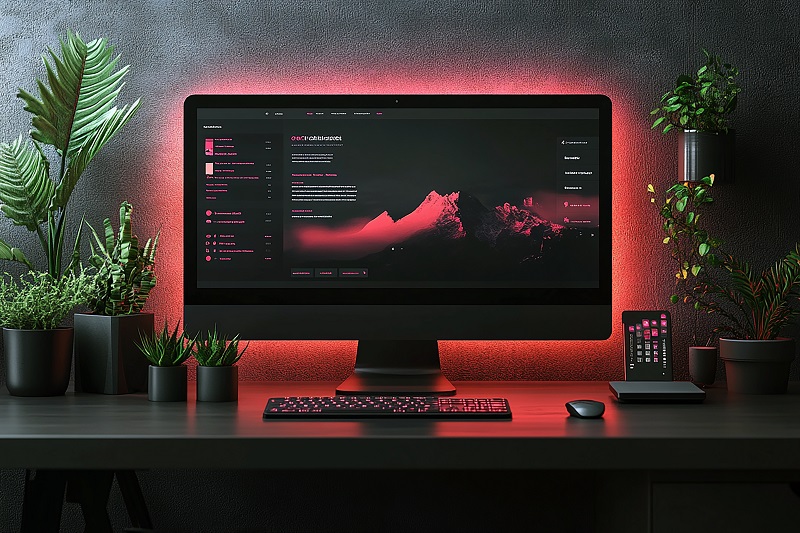JPG Vs PNG Vs WebP - Which is Better for an Optimized Website?

As a content creator, I often find myself faced with the dilemma of choosing the right image format for my website. JPG, PNG, and WebP are the most common image formats, each with its own strengths and weaknesses. In this blog post, I will compare these three formats and provide a simple handbook for better understanding which one is better for an optimized website.
Understanding Image Formats
JPG (Joint Photographic Experts Group)
JPG is a widely used image format that is great for photographs and complex images with many colors. It uses a "lossy" compression method, which means that some image quality is lost when the file size is reduced. However, the loss in quality is often negligible to the human eye, making JPG a popular choice for web images.
Pros:
-
Suitable for photographs and images with many colors.
-
Good compression, which reduces file size without significant loss of quality.
Cons:
-
Lossy compression can result in a slight decrease in image quality.
-
Not suitable for images with text or sharp edges, as it can cause blurring.
PNG (Portable Network Graphics)
PNG is another popular image format that is best suited for images with text, sharp edges, and transparency. Unlike JPG, PNG uses a "lossless" compression method, which means that no image quality is lost when the file size is reduced. This makes PNG ideal for graphics such as logos, icons, and illustrations.
Pros:
-
Lossless compression preserves image quality.
-
Supports transparency, making it ideal for images with text or sharp edges.
Cons:
WebP
WebP is a relatively new image format developed by Google, designed to offer both lossless and lossy compression. It aims to provide better compression than JPG and PNG, resulting in smaller file sizes without compromising image quality. WebP also supports transparency and animation, making it a versatile choice for web images.
Pros:
Cons:
PNG VS JPEG VS WebP: Which One Is Better?
Let’s see which one is ideal for your website, according to SocialMarketing90, a leading and trustable reviewing site, where they are the one who talks everything about the Image format and which one is ideal for the website.
-
Compression: JPEG uses lossy compression, which can lead to a slight loss in quality. PNG uses lossless compression, preserving image quality but resulting in larger file sizes. WebP offers both lossless and lossy compression, providing a balance between quality and file size.
-
Transparency: PNG and WebP both support transparency, allowing for images with transparent backgrounds. JPEG does not support transparency, so it is not suitable for images with transparent elements.
-
Browser Support: JPEG is widely supported by web browsers and devices. PNG is also well-supported but can result in larger file sizes. WebP is newer and may not be supported by all browsers, so it is important to provide fallback options for unsupported browsers.
-
Quality: JPEG is suitable for photographs and images with many colors, offering good compression with minimal loss in quality. PNG is ideal for images with text or sharp edges, as it preserves image quality without compression artifacts. WebP provides better compression than both JPEG and PNG, resulting in smaller file sizes with comparable quality.
-
File Size: When it comes to file size, WebP is the winner, offering better compression than both JPEG and PNG. This can lead to faster loading times and improved website performance.
-
Animation: WebP is the only format of the three that supports animation, making it a versatile choice for web images that require animation effects.
Tips To Choose The Best Image Format
-
Consider the type of image: Determine whether your image is a photograph, graphic with text, or graphic with sharp edges. This will help you decide which format is best suited for your needs.
-
Think about file size: If you're concerned about the file size of your images, consider using WebP or optimizing your JPG or PNGs for the web.
-
Check browser compatibility: Before choosing a format, make sure that it is supported by the web browsers used by your audience. Providing fallback options for unsupported browsers is also a good practice.
-
Consider the importance of image quality: For images where image quality is paramount, such as photographs or high-resolution graphics, consider using PNG or WebP for better quality.
-
Test different formats: If you're unsure which format to use, try saving your image in different formats and compare the file sizes and image quality to see which one works best for you.
-
Use tools for optimization: There are many online tools and software available for optimizing images for the web. These tools can help you reduce file sizes without compromising image quality.
-
Consider the overall design: Think about how your images will fit into the overall design of your website. Choose a format that complements your design and enhances the user experience.
-
Stay updated: Image formats and web technologies are constantly evolving. Stay updated with the latest developments and trends to ensure that your images are optimized for the web.
Conclusion
Picking the right image format is crucial for optimizing your website's performance. Understanding the strengths and weaknesses of JPG, PNG, and WebP can help you make an informed decision. Consider the type of image, file size, browser compatibility, and image quality when deciding the right format for your website. By following these tips, you can ensure that your website loads quickly and provides a seamless user experience.
